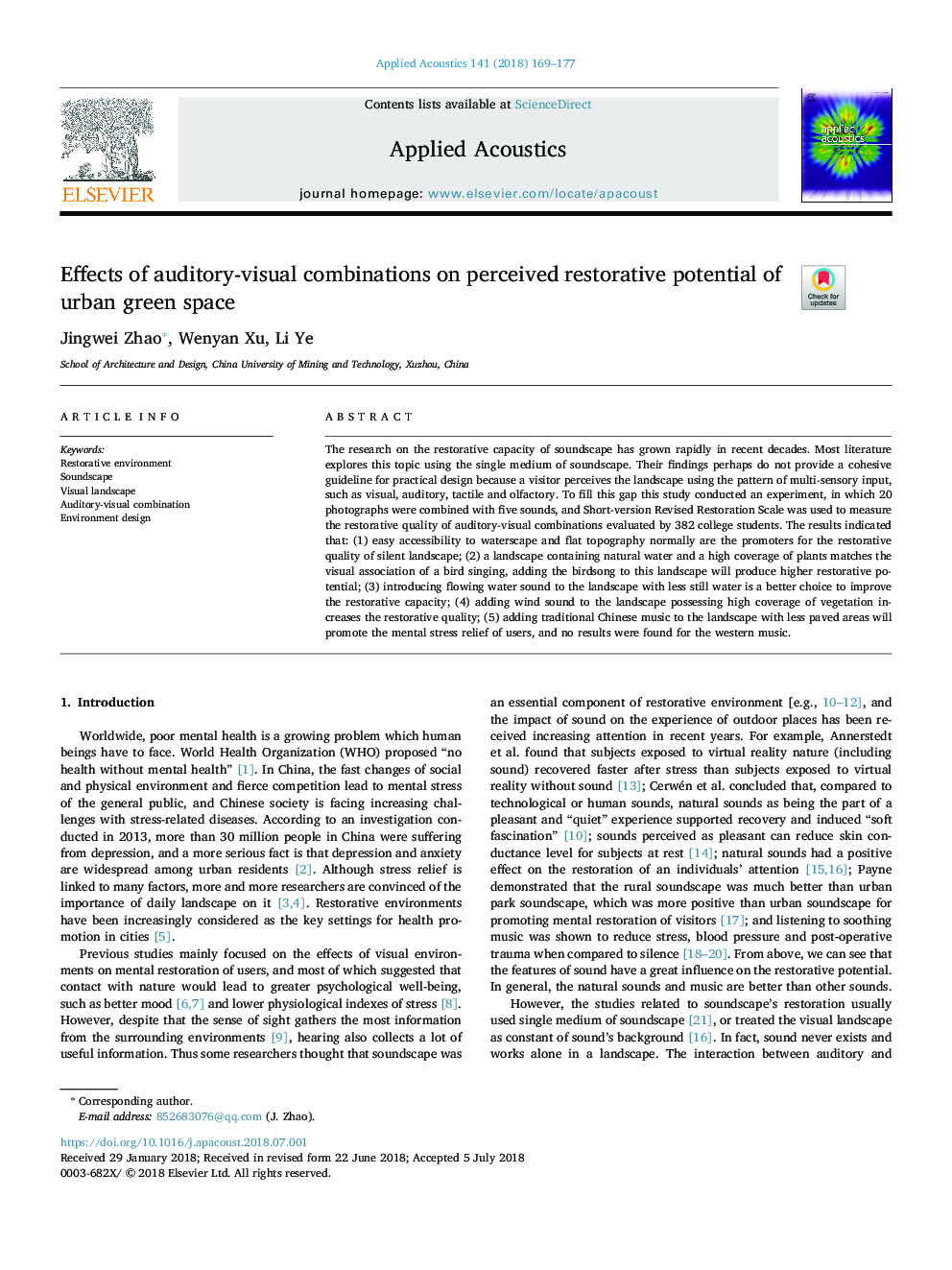| Article ID | Journal | Published Year | Pages | File Type |
|---|---|---|---|---|
| 7152006 | Applied Acoustics | 2018 | 9 Pages |
Abstract
The research on the restorative capacity of soundscape has grown rapidly in recent decades. Most literature explores this topic using the single medium of soundscape. Their findings perhaps do not provide a cohesive guideline for practical design because a visitor perceives the landscape using the pattern of multi-sensory input, such as visual, auditory, tactile and olfactory. To fill this gap this study conducted an experiment, in which 20 photographs were combined with five sounds, and Short-version Revised Restoration Scale was used to measure the restorative quality of auditory-visual combinations evaluated by 382 college students. The results indicated that: (1) easy accessibility to waterscape and flat topography normally are the promoters for the restorative quality of silent landscape; (2) a landscape containing natural water and a high coverage of plants matches the visual association of a bird singing, adding the birdsong to this landscape will produce higher restorative potential; (3) introducing flowing water sound to the landscape with less still water is a better choice to improve the restorative capacity; (4) adding wind sound to the landscape possessing high coverage of vegetation increases the restorative quality; (5) adding traditional Chinese music to the landscape with less paved areas will promote the mental stress relief of users, and no results were found for the western music.
Related Topics
Physical Sciences and Engineering
Engineering
Mechanical Engineering
Authors
Jingwei Zhao, Wenyan Xu, Li Ye,
